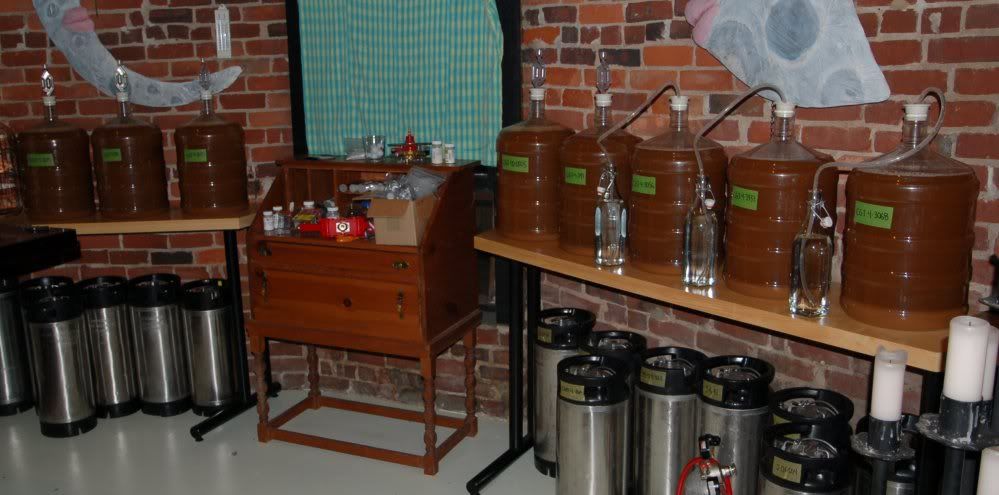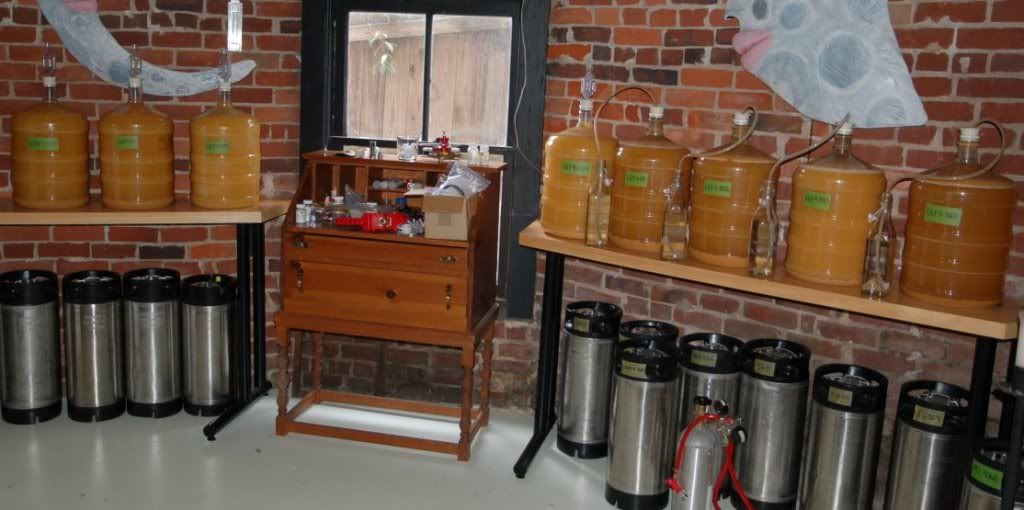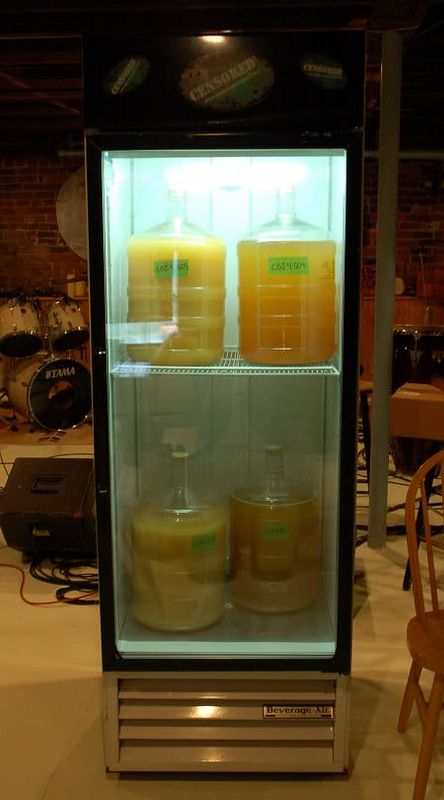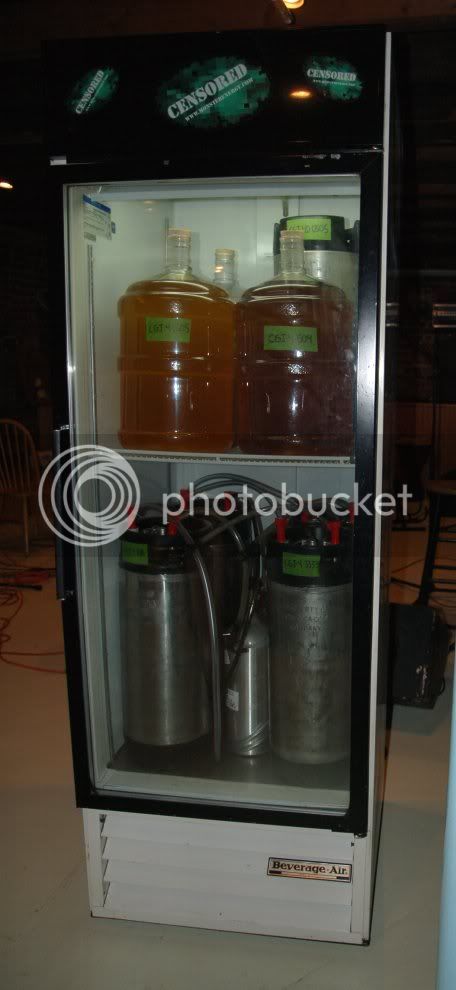CvilleKevin
Well-Known Member
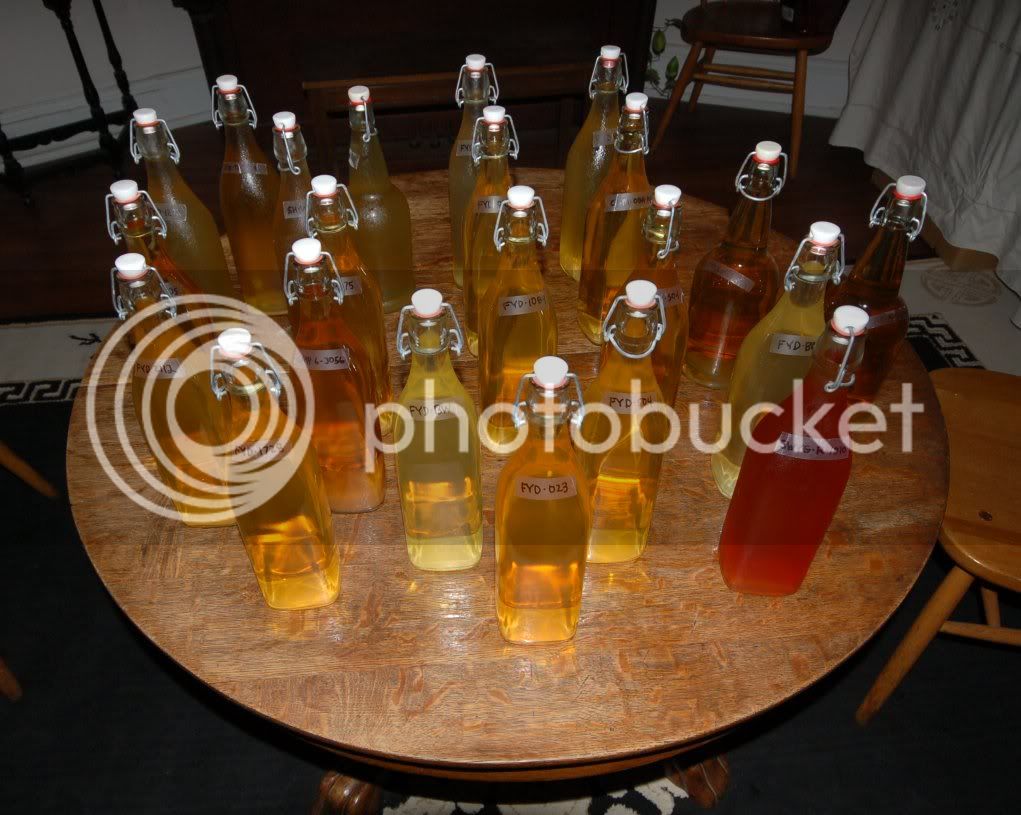
This past Wednesday, some folks came over to help me test 12 test batches from last year, using various new yeasts. I hadnt tasted any of these yet, so I also had some other known good batches on hand. Fortunately all of the test batches were drinkable - only really one outstanding one IMHO, but all were quickly dispatched. We went through these 12 and 10 others. Twenty two folks were good enough to fill out rating sheets so the scores below are a fairly representative sample - at least of my friends who like cider.
The first 12 bottles were test batches, using Fuji and Yellow Delicious apples pressed on Jan 7, 2011, unpasteurized, sg of 1.066 and ph 4.6. The fresh juice mix was low in acid (not much tang in the finish) so I let most of these ferment out a little lower than usual. That made them a little on the dry side, but better balanced. Most of them carbed up after 8 months in the bottle so the actual fg was probably several points lower than the values shown below, which were taken at bottling time. The ones that carbed are probably not great candidates for cold crashing. Dry ciders dont get much love from my friends, so scores were on the low side - I would have scored most of them about a pint higher.
4.3 - Safale S04 Ale yeast, fg 1.006, slight carb
5.4 - Wyeast #1084 Irish Ale Yeast, fg 1.002, carb not noticeable
7.1 - WLP041 Pacific Ale Yeast , fg 1.022, slight carb
5.1 - WLP028 Edinburgh Scottish Ale Yeast, fg 1.004, carb not noticeable
5.1 - WLP775 English Cider Yeast, fg 1.002, strong carb
5.6 - WLP023 Burton Ale Yeast, fg 1.006, strong carb
6.2 - WLP810 San Francisco Lager Yeast , fg 1.010, strong carb
5.0 - Wyeast 1272 American Ale II, fg 1.004, strong carb
6.5 - Wyeast 1728 Scottish Ale Yeast, fg 1.002, strong carb
6.4 - Wyeast 2112 California Lager Yeast, fg 1.008, moderate carb
6.4 - Brewferm Wheat yeast, fg 1.002, slight carb
6.5 - Mix of British yeasts , fg 1.000, slight carb
WLP041 was the clear favorite of this round. The ferment stalled back in January at 1.022. I crashed it and it didnt seem to drop much more over 8 months. Maybe 1 or 2 points, going by the carb. It got a lot of 9s and 10s, but was too sweet for some folks. I'll probably experiment with this again to see if I can get it to stall consistently. The Wy1084, WLP23, Wy1728 and Wy2112 got good scores from the dry cider drinkers but overall didnt do very well.
After the test batches, we went a few earlier batches. Most of these were keg carbed and then bottled, except for the two wild yeast batches. After these six, we drank a few more but by then, no one was taking notes.
7.1 - Gala, Mac, Prima pressed Aug 29, 2010, Wyeast 3056, turbinado. fg 1.010
8.1 - Stayman, York, Empire: 10-8-09 Wyeast 3068 Weihenstephan, fg 1.020
7.0 - Cortland, Gala Mac, pressed 9-13-2010 Wyeast 1010, orange blossom. honey, fg 1.010
9.2 - Stayman, Pink Lady, Albemarle Pippen, pressed 11-15-10, Wild yeast batch #1, fg ~1.010 (not measured)
4.5 - Stayman, Pink Lady, Albemarle Pippen, pressed 11-15-10, Wild yeast batch #2, fg ~1.004 (not measured)
7.9 - Stayman Winesap, York, Gala, pressed Oct 11 2010 Wy1010, raspberries, fg 1.002
My favorite of this round was the first one. The first wild yeast batch was also really good, as was the Wy1010 with raspberries. The second wild yeast batch was from the same batch as the first, but fermented a little longer. Very similar taste, but drier - which some people preferred, but majority did not. I wasnt crazy about the 3068 batch, but most folks really liked it .


